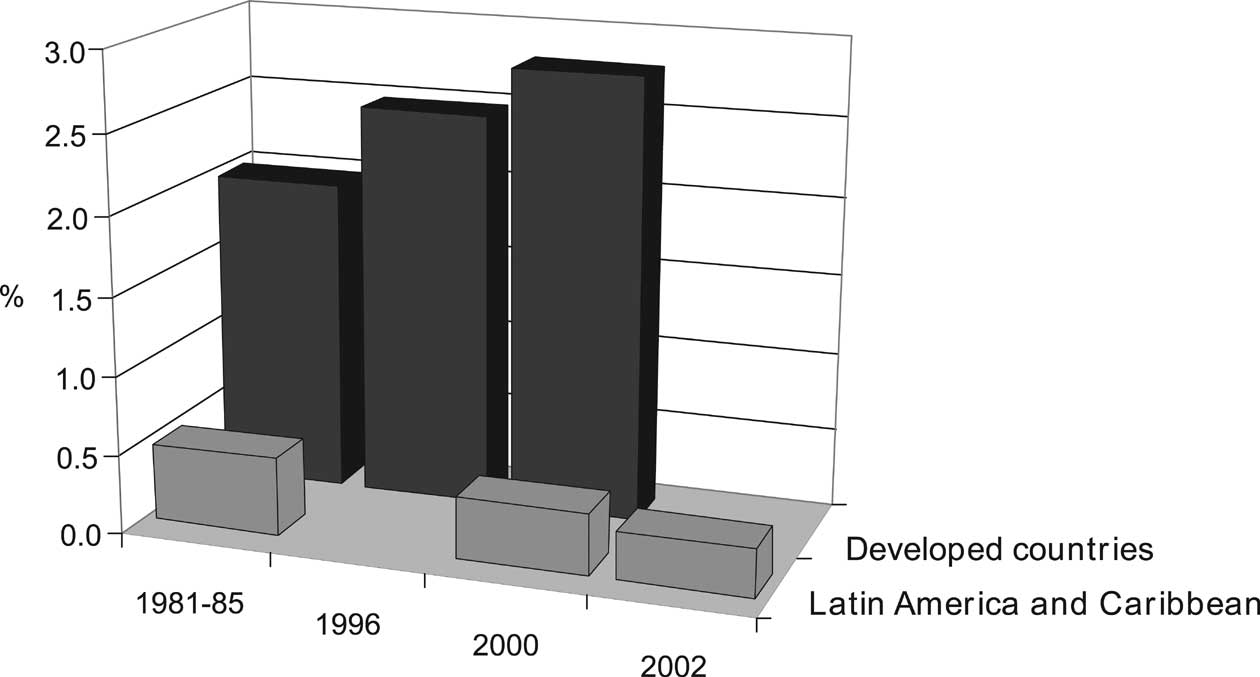
| Previous | Return to table of contents | Search Reports | Next |
| « Back to weltagrarbericht.de | ||
AKST Systems in Latin America and the Caribbean: Evolution, Effectiveness and Impact | 99

Figure 2-2. Evolution of the intensity of public agricultural research in Latin America and
the Caribbean compared to developed countries. Source: Ardila, 2006.
oped countries, the lack of public investment in agricultural research is a significant threat if one considers the growing demand for knowledge to ensure the sustained growth of food production—something that can only be secured by innovation and increases in soil and water productivity. It should be noted that in many of these countries the availability of agricultural land per capita will tend to fall over the coming decades, making it likely that food production will not meet local demand. Not only will the balance of trade be affected; the population with the lowest income levels will have to pay more for food. Recent increases in international maize prices are indicative of this phenomenon. Even in the five countries in the region that can boast of relatively strong public research institutions, the decrease in government funding has significantly affected their productivity. By degrading the ratio between operational and |
personnel costs, they have reduced their efficiency and the
possibilities of carrying out the institutional transformation
that contextual changes in recent decades call for. This entails a reconceptualization of NARIs to incorporate new management schemes that contemplate strategic planning aimed at forging alliances and cooperation |
Table 2.7 World and LAC: Indicators of public and private R&D activities around 1995.
(a) Expenditure in agricultural research and development (millions of dollars at 1993 rates)
Developing World |
Developed World |
World Total |
||
LAC |
Total |
|||
| Public | 1,947 |
11,469 |
10,215 |
21,684 |
| Private | 91 |
672 |
10,829 |
11,511 |
| Total | 2,038 |
12,141 |
21,044 |
33,194 |
(b) Intensity ratio of agricultural research (percentage)
Developing World |
Developed World |
World Total |
||
LAC |
Total |
|||
| Public | 0.98 |
0.62 |
2.64 |
1.04 |
| Private | 0.01 |
0.04 |
2.80 |
0.61 |
| Total | 0.99 |
0.66 |
5.43 |
1.65 |
Source: Pardey and Beintema, 2001.
| Previous | Return to table of contents | Search Reports | Next |
| « Back to weltagrarbericht.de | ||